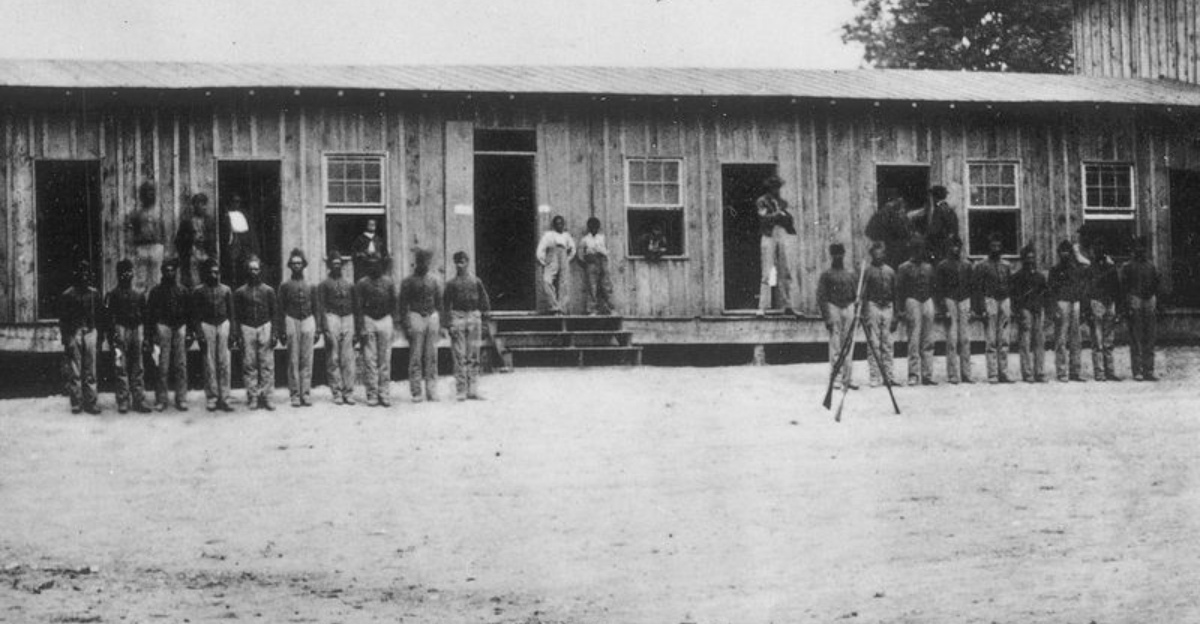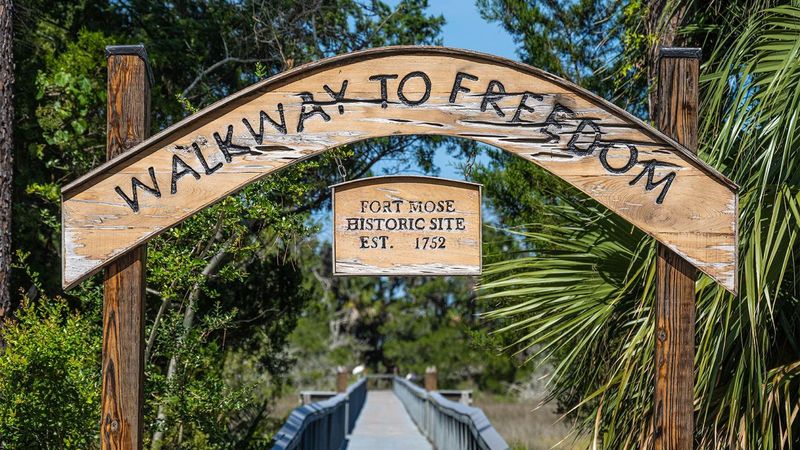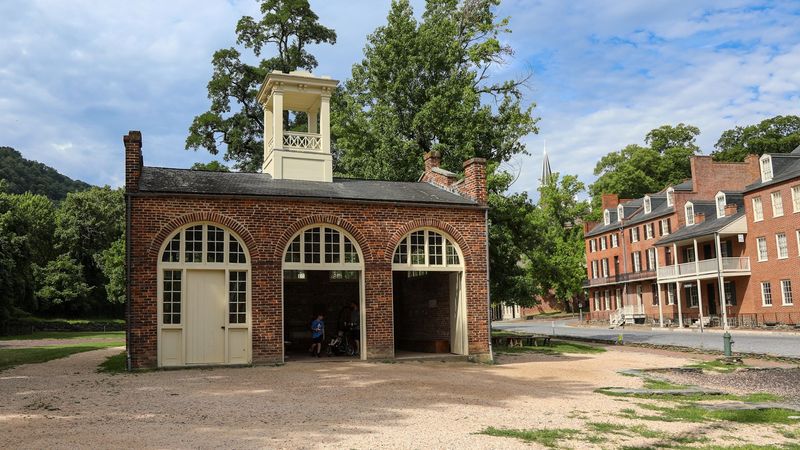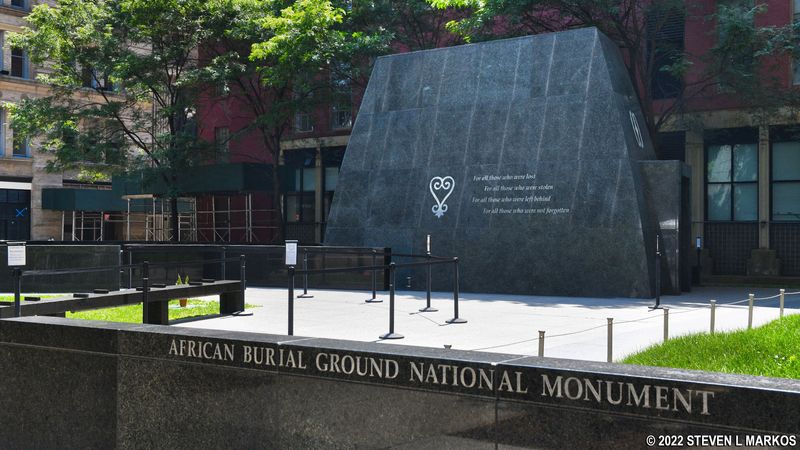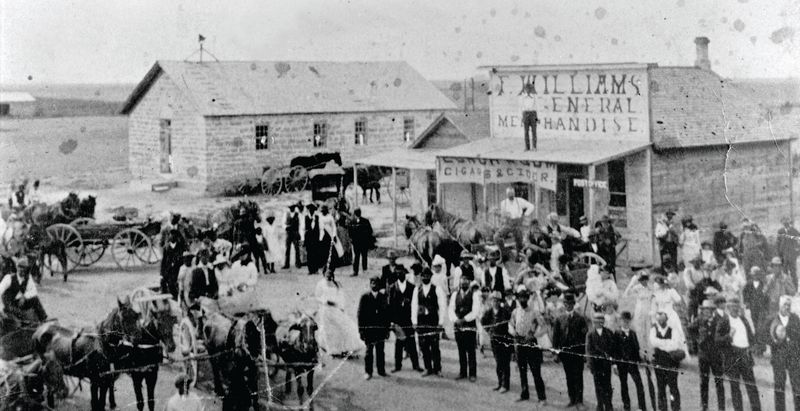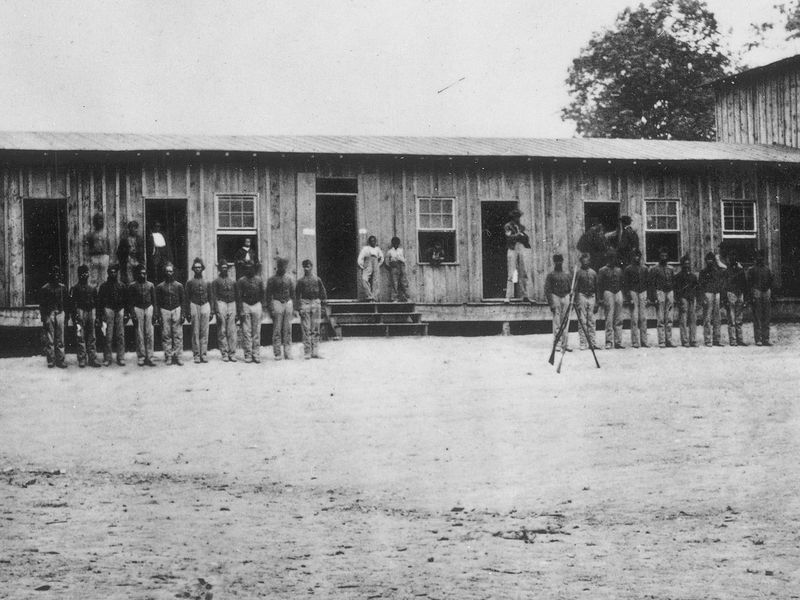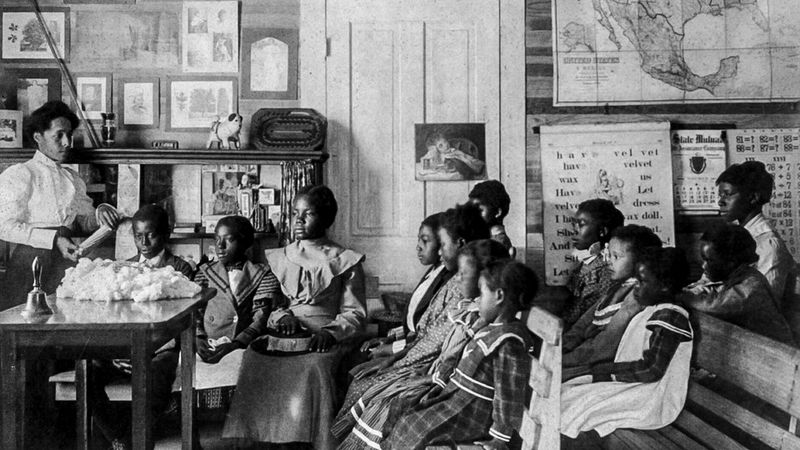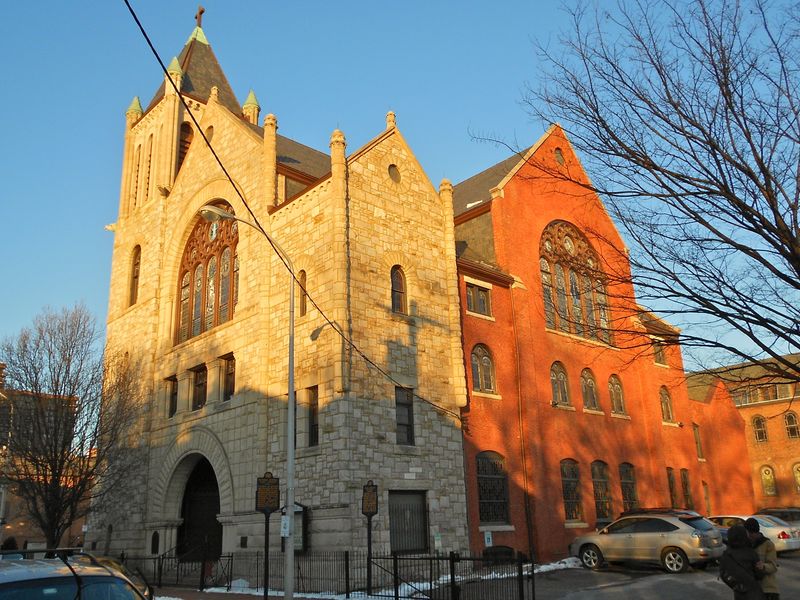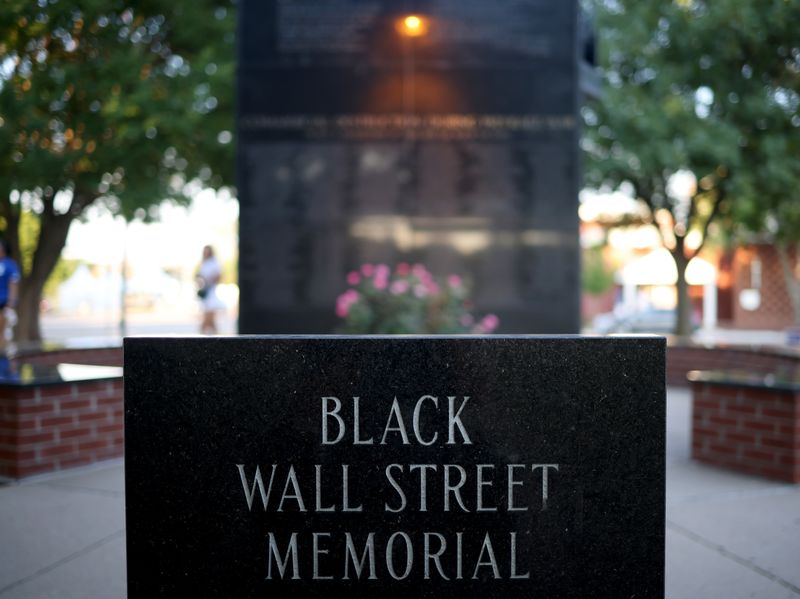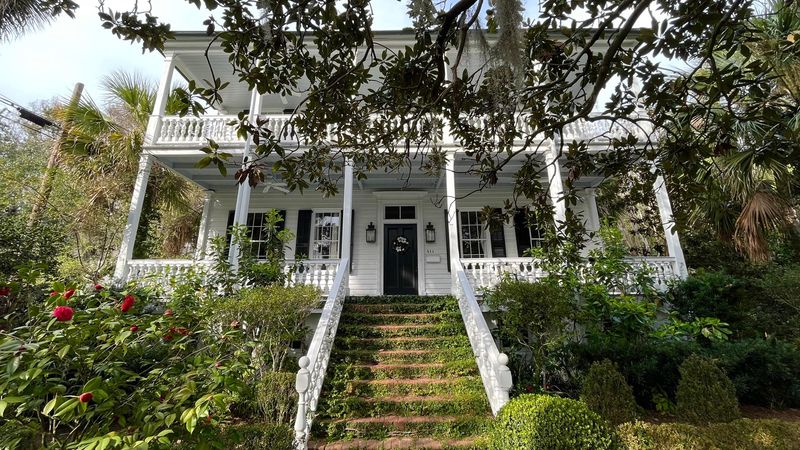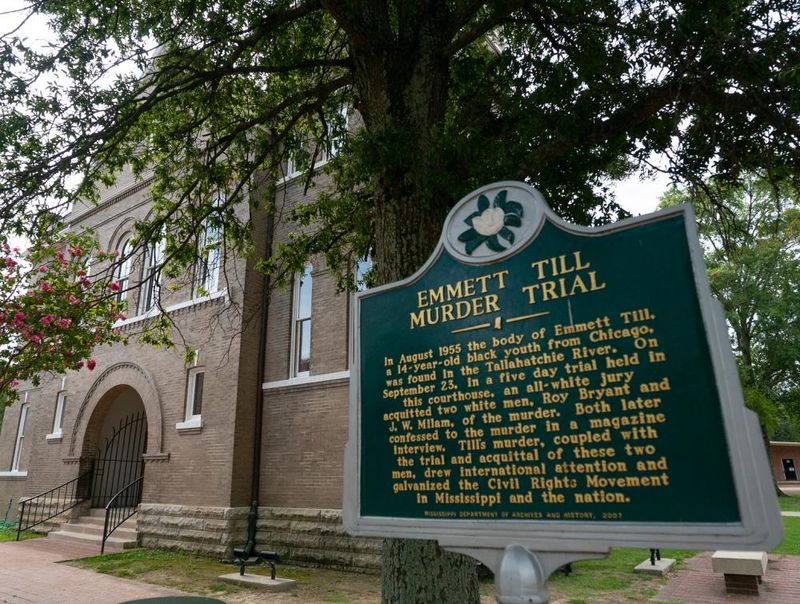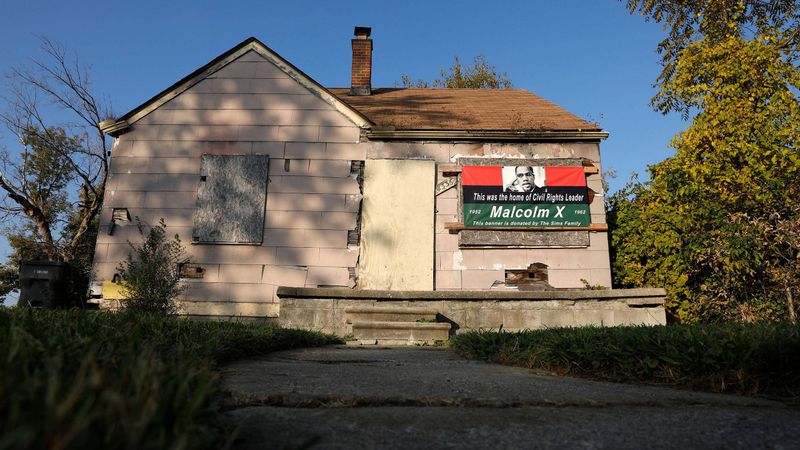Explore the unseen corners of America’s past that have shaped the fabric of the nation. From the first free Black settlement to the heart of the Civil Rights Movement, these sites narrate untold stories of resilience, defiance, and empowerment. Each location stands as a testament to the indelible impact of Black history on American culture, society, and democracy. Discover the places where history was made, and the future was forged, as we uncover the 17 hidden Black history sites that changed America forever.
1. Fort Mose, Florida – The First Free Black Settlement (1738)
Fort Mose, established in 1738 in Spanish Florida, represents the first legally sanctioned free Black settlement in America. Before the Underground Railroad, it served as a sanctuary for escaped slaves seeking freedom. Situated near St. Augustine, Fort Mose housed courageous men and women who fled the brutal conditions of enslavement. The fort was a symbol of resistance and a beacon of hope for African Americans striving to live autonomously. Though not widely known, its legacy is a critical chapter in Black history, illustrating the early fight for freedom and justice in a hostile environment.
2. Seneca Village, New York – A Black Community Buried Under Central Park
Before Central Park, there was Seneca Village—a vibrant Black and Irish neighborhood in New York City. Seized in 1857, this community was erased to create the iconic park. Seneca Village was a flourishing settlement, providing homes and hope for Black families in an era of discrimination. The land grab displaced many, erasing decades of cultural and social contribution. Today, it stands as a reminder of the sacrifices and resilience of those who built lives amid adversity, a poignant memory of a community lost to urban expansion.
3. John Brown’s Fort, West Virginia – Where a Rebellion Began
John Brown’s Fort in Harpers Ferry, West Virginia, is where the infamous 1859 raid was orchestrated. Abolitionist John Brown, along with his free Black allies, launched a daring but ill-fated attempt to incite a slave revolt. This fort became the site of a pivotal moment in history, symbolizing the fierce opposition to slavery. Though the raid failed, it ignited national tensions, contributing to the outbreak of the Civil War. John Brown’s legacy endures, celebrated for his unwavering commitment to justice and equality, despite the personal and historical costs.
4. The Whitney Plantation, Louisiana – The Only Slavery Museum on a Plantation
Unlike other plantations, the Whitney Plantation in Louisiana is dedicated solely to the stories of enslaved people. Visitors can experience the haunting narratives of those who lived and toiled there through first-person accounts. This unique focus sheds light on the realities of slavery, offering an unfiltered glimpse into the past. The Whitney Plantation stands as a poignant counter-narrative, confronting the romanticized views of the Old South. It serves as an educational and emotional journey through history, honoring the resilience and humanity of enslaved individuals.
5. Allensworth, California – The Black Utopia (1908)
Allensworth, California, founded in 1908 by Colonel Allen Allensworth, was envisioned as a utopian community for Black Americans. As the first all-Black self-governing town in California, it offered a rare glimpse of independence and self-determination. Despite its promising start, the town faced challenges from racial discrimination and water rights issues, leading to its decline. Yet, the spirit of Allensworth endures, symbolizing the determination to build a community free from racial oppression. Its story is a testament to the aspirations and resilience of its inhabitants.
6. The African Burial Ground, New York – A Lost Cemetery Rediscovered
In 1991, a construction project in Lower Manhattan uncovered 419 graves of enslaved Africans, revealing a hidden chapter of New York’s history. The African Burial Ground, once forgotten, highlighted the city’s deep-rooted connection to slavery. This discovery led to the establishment of a national monument, serving as a place of reflection and tribute to those who lived and died in bondage. The burial ground’s unearthing reshaped historical narratives, emphasizing the often-overlooked presence and contributions of Black individuals in America’s development.
7. Nicodemus, Kansas – The Last Black Frontier Town
Established in 1877, Nicodemus, Kansas, stands as the last remaining Black frontier town. Founded by freedmen escaping the South, it served as a sanctuary for Exodusters seeking new opportunities. Nicodemus thrived as a community of resilience and hope, its residents building lives amid the vast plains. Today, it is a National Historic Site, maintaining its legacy with descendants still residing there. Nicodemus represents a unique chapter in American history, illustrating the determination and endurance of its settlers in the face of adversity and change.
8. Camp Nelson, Kentucky – Where Black Soldiers Won Freedom for Their Families
Camp Nelson in Kentucky served as a vital training ground for over 10,000 Black Union soldiers during the Civil War. It also became a refuge for their families, paving the way for President Lincoln’s special emancipation order. The camp was a beacon of hope and liberation, providing a path to freedom and citizenship. Today, Camp Nelson stands as a monument to the courage and contributions of those who fought for their freedom and laid the groundwork for future generations. Its legacy continues to inspire pride and remembrance.
9. The Dark Room, Alabama – The Secret School That Defied Jim Crow
In the 1940s, amidst the shadows of segregation, Miss Autherine Lucy taught Black children in a clandestine classroom known as “The Dark Room.” Her courage defied the oppressive Jim Crow laws that sought to suppress Black education. This secret school symbolized resistance and empowerment, where learning was a form of protest. Miss Lucy’s work laid the groundwork for future educational advancements, challenging the status quo. Her legacy is a testament to the power of knowledge and the unyielding spirit of those who fought for educational equality.
10. Mother Bethel AME Church, Philadelphia – The Oldest Black-Owned Church (1794)
Founded in 1794 by Richard Allen, Mother Bethel AME Church in Philadelphia is the oldest Black-owned church in the United States. It was not just a place of worship but a hub for the abolitionist movement and a station on the Underground Railroad. The church played a pivotal role in the fight against slavery, hosting meetings and providing sanctuary for those escaping bondage. Today, Mother Bethel stands as a symbol of faith, resilience, and the enduring struggle for justice and equality, continuing its mission in the modern era.
11. The Black Wall Street Memorial, Oklahoma – Remembering the Tulsa Massacre
Before the devastating 1921 Tulsa Race Massacre, Greenwood, known as Black Wall Street, was America’s wealthiest Black district. It thrived with businesses and cultural richness, a testament to African American enterprise and resilience. The massacre decimated the community, leaving a scar on the nation’s history. Today, a memorial and museum honor those who perished and celebrate the district’s legacy. Black Wall Street serves as a powerful reminder of both the potential and perils faced by Black communities, symbolizing the enduring fight for justice and recognition.
12. Fort Monroe, Virginia – Where Slavery Began… and Began to End
Fort Monroe in Virginia holds a dual significance in American history. In 1619, it witnessed the arrival of the first enslaved Africans, marking the beginning of a dark chapter. However, during the Civil War, it earned the moniker “Freedom’s Fortress” as a refuge for escaped slaves seeking liberation. This transformation from a symbol of oppression to one of freedom underscores the complex tapestry of American history. Fort Monroe remains a poignant landmark, reflecting both the past’s injustices and the relentless pursuit of emancipation and equality.
13. The Robert Smalls House, South Carolina – From Slave to Congressman
Once a house of bondage, the Robert Smalls House in South Carolina became a beacon of triumph. Smalls, an enslaved man who commandeered a Confederate ship to freedom, later bought his former enslaver’s home. His journey from enslavement to congressman is a remarkable story of perseverance and defiance. Smalls used his influence to advocate for Black rights and education, leaving a lasting impact on his community and nation. The house stands today as a symbol of resilience, embodying the transformative power of courage and determination.
14. The Emmett Till Historic Sites, Mississippi – Where a Boy’s Murder Ignited a Movement
The Emmett Till Historic Sites in Mississippi are somber reminders of a pivotal moment in the Civil Rights Movement. Till’s brutal murder in 1955, and the subsequent open-casket funeral, shocked the nation and galvanized activism against racial injustice. The sites, including the barn where he was tortured and the river where his body was found, serve as pilgrimages for those commemorating his sacrifice. Emmett Till’s legacy continues to resonate, highlighting the enduring struggle for justice and equality and the power of collective action in the face of adversity.
15. The Negro Leagues Baseball Museum, Missouri – More Than Just Sports
Located in Kansas City, Missouri, the Negro Leagues Baseball Museum pays homage to the extraordinary athletes who played in the Negro Leagues. Long before Jackie Robinson broke the color barrier, these leagues showcased the talents and tenacity of Black players. The museum offers a rich tapestry of history, spotlighting the challenges and triumphs of these pioneering athletes. It stands as a celebration of their contributions to sports and American culture, preserving the legacy of those who paved the way for future generations.
16. The Malcolm X House, Michigan – Where a Leader Was Nearly Burned Out
The Malcolm X House in Michigan is a poignant reminder of the early risks faced by civil rights leaders. This modest home was nearly destroyed by firebombing from the KKK, a testament to the dangers faced by those advocating for change. Here, young Malcolm Little grew up, shaped by the violence and racism of his environment, which fueled his future activism. The house embodies the resilience and transformation of Malcolm X, who emerged from adversity to become a pivotal figure in the fight for equality and justice.
17. The Black Panthers’ First Office, California – Revolution in a Storefront
In 1966, a modest storefront in Oakland, California, became the birthplace of the Black Panther Party. Founded by Huey Newton and Bobby Seale, the office was a hub for revolutionary activities advocating for Black empowerment and community justice. The Black Panthers challenged systemic oppression, offering social programs and armed self-defense. This unassuming location marked the genesis of a movement that would leave a lasting impact on American society, inspiring future generations to continue the fight for civil rights and justice.
